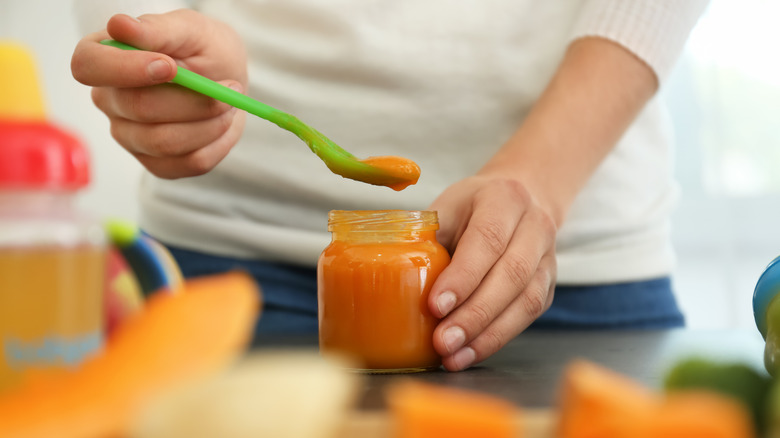The FDA Is Taking Major Steps To Reduce Lead Exposure In Baby Food
In February 2021, a congressional investigation revealed that four major U.S. baby food manufacturers knowingly sold products that contained high levels of toxic heavy metals, including arsenic, lead, cadmium, and mercury. Illinois Democratic Representative Raja Krishnamoorthi told CNN that some of these products were found to contain hundreds of parts per billion of the toxic metals, which is shockingly higher than the recommended single-digit parts per billion endorsed by "experts and governing bodies." According to The Centers for Disease Control and Prevention, even the slightest trace of lead can be harmful to babies and young children under the age of six, as it can cause all sorts of developmental issues.
The Food & Drug Administration (FDA) wants to bring attention to the dangers lead poses to little ones. On Tuesday, the agency launched a proposed action plan that aims to "reduce dietary exposure to contaminants to as low as possible, while maintaining access to nutritious foods." Here's what we know.
The proposal is part of the FDA's 'Closer to Zero' campaign
An FDA draft proposal released Tuesday suggests a limit on lead levels in packaged foods in jars, pouches, tubs, and boxes for children under two. While the agency acknowledges that the ideal amount of lead in these products is zero, the restrictions are designed to reduce lead levels by up to 27%. "Although it is not possible to remove these elements entirely from the food supply, we expect that the recommended action levels will cause manufacturers to implement agricultural and processing measures to lower lead levels," reads the proposal, which is part of the FDA's "Closer to Zero" campaign.
While the new FDA guidelines would not be binding, they would serve as a means of holding industry giants accountable for making the safety of babies a top priority. A 60-day period of public feedback will precede the draft's potential finalization.

